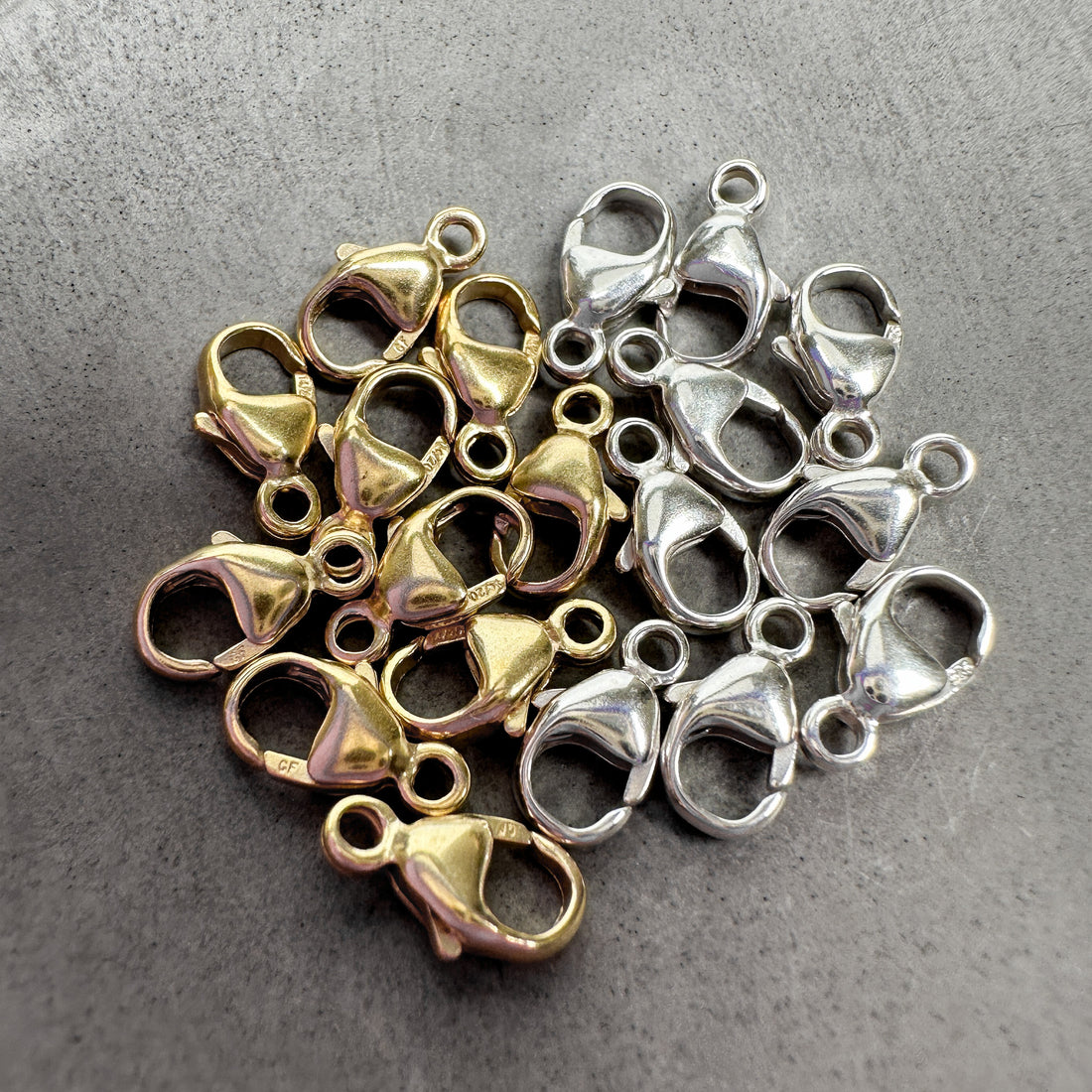For how much we use these clasps, you'd think they've been around for a looooong time! But no! It was patented only a few years before we opened The Bead Gallery, Honolulu!
Lobster Clasps
I love this style of clasp, and since we are featuring it, I wanted to tell you a little bit more...and went on a Nancy Drew investigation. Here's what I found:
Did you know that the lobster claw clasp often found on jewelry isn't considered vintage? Although it has predecessors dating back to 1959 and 1976, the modern lobster claw clasp we know today wasn't patented until 1996. So, while a piece of jewelry may have that vintage look and feel, if it's sporting a lobster claw clasp, it's actually a more recent creation!
For more details, please refer to this article:
http://junkboxtreasures.com/blog/the-lobster-claw/
The Origins of the Name:
Lobster claw clasps get their name from their unique shape, which closely resembles a lobster's claw. The claw-like structure is designed to provide a secure and reliable connection for jewelry pieces. The resemblance to lobster claws is not only aesthetically appealing but also serves as a functional inspiration for the clasp's design.
How Lobster Claw Clasps Are Made:
The manufacturing process of lobster claw clasps typically involves several steps. The process begins with a metal alloy, such as gold, silver, or brass, which is melted and poured into a mold to create the desired shape. After the metal has cooled and hardened, it is carefully removed from the mold and cleaned to remove any imperfections.
The next step involves adding the hinge and lever components to the clasp. These parts are usually made of the same metal alloy as the rest of the clasp and are attached using small pins or screws. This assembly process requires precision and attention to detail to ensure the clasp functions properly and securely.


